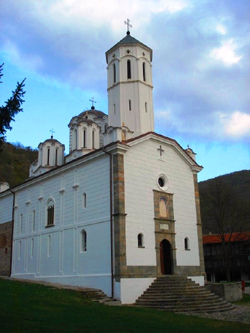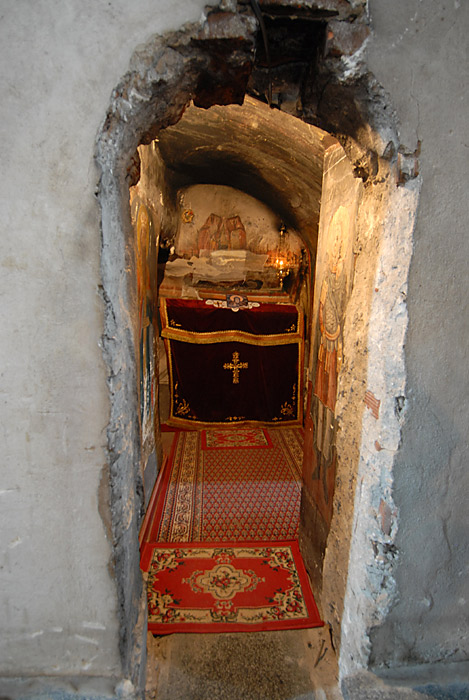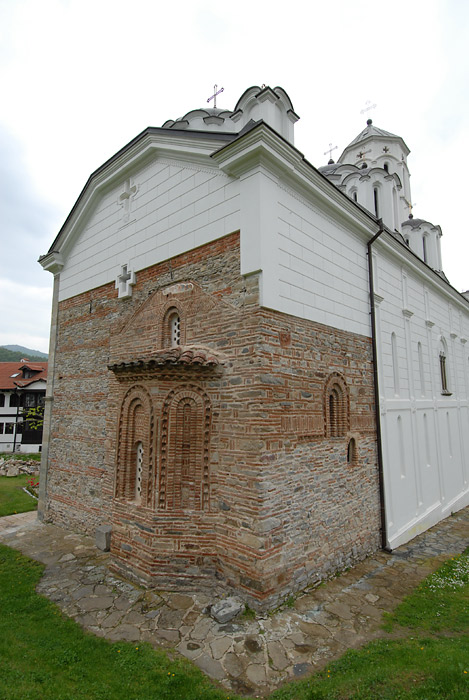View Larger Map
The Church Saint Apostles Peter and Paul, or Church of Peter, is located on a hill near Stari Ras, the mediaeval capital of Rascia (Serbia) near Novi Pazar, Serbia. It is the oldest church in Serbia, dating from the 9th or 10th century, when the first Serbian state was created under great Prefect Nemanja in the 11th century.
Petar Gojnikovic, who ruled Serbia from 892-917, was entombed in this church. In the chrysobulls of Basil II dated to 1020, the Ras bishopric is mentioned as serving the whole of Serbia, with its seat at the Church of the Apostolic Saints Peter and Paul. Saint Sava (1175–1235), founder of the Serbian Orthodox Church, a Serbian prince and the brother of the Serbian king Stefan Prvovencani (the First-Crowned) was baptised in this church. Stefan Nemanja held the council here which outlawed the Bogomils, an ancient Gnostic religious sect which originated in Bulgaria, and whose refusal to adhere to Orthodox dogma made them a destabilising element in the embattled Serbian kingdom of the early Middle Ages.
 |
| Black-figure vase |
Archaeological findings attest that the church was built on several earlier churches, the remains of which have been well preserved. During archaeological excavations in 1957/58 a 5th century BC Illyrian royal grave was excavated beneath the floor of the church. Greek sculptures dating from the 7th and 6th century BC, as well as Black-figure pottery, silver dishes, gold jewellery, bronze, glass and amber objects, masks, beads and other items of remarkable historical value were also unearthed. Today the church is surrounded by the 18-19th century Serbian Orthodox cemetery which is one of the best preserved of its kind in Serbia.
 In the 7th century, above the former Prince’s grave, an Early Christian church was built which was converted in the 9th or 10th century. This construction work was probably started during the reign of Caslav Klonimirovic (Serbian Prince who ruled probably between 927-960), and formed the basis of the church which with later alterations assumed today's appearance.
In the 7th century, above the former Prince’s grave, an Early Christian church was built which was converted in the 9th or 10th century. This construction work was probably started during the reign of Caslav Klonimirovic (Serbian Prince who ruled probably between 927-960), and formed the basis of the church which with later alterations assumed today's appearance.
The foundation of the church, with its massive columns, extensive floor-plan and an octagonal tower which conceals an inner dome are examples of the circular mausoleum architectural type used after Emperor Constantine. The Church has a ground plan of a rotunda with an inscribed quatrefoil, and originates from the Byzantine era, while the frescoes are from the 10th, 12th and 13th century.
After exhaustive archaeological excavations, this church was fully restored in 1960. Stylistically it is similar to churches in Georgia and Armenia dating from the 7th to 9th centuries, but thanks to the alterations and upgrades it became unique, which was one of the reasons that it found a place on the UNESCO list of protected monuments.
The church was declared a Monument of Culture of Exceptional Importance in 1979, and it is protected by the Republic of Serbia.
The church was declared a Monument of Culture of Exceptional Importance in 1979, and it is protected by the Republic of Serbia.









